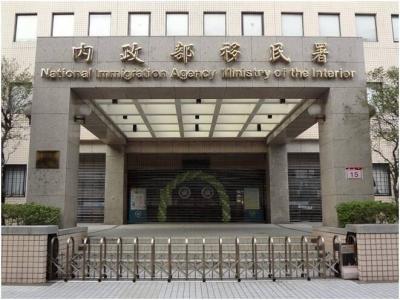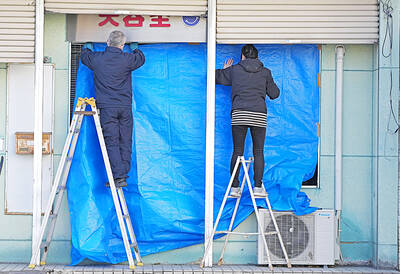A renewed debate on Taiwan’s status is expected as the government plans to put historical documents concerning Taiwan on exhibition next year to mark the 100th anniversary of the Republic of China (ROC), a source from the Ministry of Foreign Affairs said.
Among international treaties to be displayed are those signed by the Qing imperial government and the ROC with other countries, such as the Treaty of Shimonoseki.
The exhibition will travel across the country to show that Taiwan’s sovereignty undoubtedly belongs to the ROC, the source said.
Deputy Minister of Foreign Affairs Shen Lyu-shun (沈呂巡) made a visit to the National Palace Museum on Friday to inspect documents owned by the ministry and stored at the museum, including the Treaty of Nanking, the Treaty of Shimonoseki, the Boxer Protocol, the Treaty of Taipei and the Sino-American Mutual Defense Treaty, as the ministry plans to organize the exhibitions next year, the ministry source said.
In the Treaty of Shimonoseki signed in 1895, the Qing Empire ceded Taiwan and Penghu Islands to Japan.
In the Treaty of Taipei — signed between the ROC and Japan in 1952 — Japan renounced all its rights, title and claims to Taiwan, Penghu Islands, the Spratly Islands and the Paracel Islands, while also nullifying all treaties, conventions and agreements between China and Japan signed before Aug. 9, 1941.
However, Japan in turn unilaterally nullified the Treaty of Taipei in 1972 when it established formal diplomatic relations with the People’s Republic of China.
The Sino-American Mutual Defense Treaty signed in 1954 between the ROC and the US, on the other hand, drew the framework for military cooperation between Taiwan and the US during the Cold War.
Sources said the documents would be exhibited at Taipei Guest House at the beginning of next year before the exhibition heads to other parts of the country.
The exhibitions would be the first time these documents were available for public view.
Honorary professor at National Taipei University and historian Chen Ching-jen (鄭欽仁) criticized the planned exhibition as move by the Chinese Nationalist Party (KMT) government to “Sinicize Taiwan.”
Cheng said the occupation of Taiwan by KMT troops at the end of World War II did not mean that Taiwan’s sovereignty was transferred to the ROC.
He said that in both the San Francisco Peace Treaty of 1952 and the Treaty of Taipei, Japan only agreed to cede its rights and claim over Taiwan, but did not mention to whom.
The true spirit of the San Francisco Peace Treaty then, Cheng said, was to return the sovereignty of Taiwan to Taiwanese.
He also said President Ma Ying-jeou (馬英九) stressed during the presidential campaign that the sovereignty of Taiwan belongs to the public, and that the public would have the final say about the future of Taiwan.
“Ma should remember his promise,” Cheng said, adding that the government’s plan to prove that Taiwan belongs to the ROC only shows that the KMT still has the mentality of a foreign regime, despite the fact that it had lost power once and only returned to power through elections.

A small number of Taiwanese this year lost their citizenship rights after traveling in China and obtaining a one-time Chinese passport to cross the border into Russia, a source said today. The people signed up through Chinese travel agencies for tours of neighboring Russia with companies claiming they could obtain Russian visas and fast-track border clearance, the source said on condition of anonymity. The travelers were actually issued one-time-use Chinese passports, they said. Taiwanese are prohibited from holding a Chinese passport or household registration. If found to have a Chinese ID, they may lose their resident status under Article 9-1

Taiwanese were praised for their composure after a video filmed by Taiwanese tourists capturing the moment a magnitude 7.5 earthquake struck Japan’s Aomori Prefecture went viral on social media. The video shows a hotel room shaking violently amid Monday’s quake, with objects falling to the ground. Two Taiwanese began filming with their mobile phones, while two others held the sides of a TV to prevent it from falling. When the shaking stopped, the pair calmly took down the TV and laid it flat on a tatami mat, the video shows. The video also captured the group talking about the safety of their companions bathing

A classified Pentagon-produced, multiyear assessment — the Overmatch brief — highlighted unreported Chinese capabilities to destroy US military assets and identified US supply chain choke points, painting a disturbing picture of waning US military might, a New York Times editorial published on Monday said. US Secretary of Defense Pete Hegseth’s comments in November last year that “we lose every time” in Pentagon-conducted war games pitting the US against China further highlighted the uncertainty about the US’ capability to intervene in the event of a Chinese invasion of Taiwan. “It shows the Pentagon’s overreliance on expensive, vulnerable weapons as adversaries field cheap, technologically

Starting on Jan. 1, YouBike riders must have insurance to use the service, and a six-month trial of NT$5 coupons under certain conditions would be implemented to balance bike shortages, a joint statement from transportation departments across Taipei, New Taipei City and Taoyuan announced yesterday. The rental bike system operator said that coupons would be offered to riders to rent bikes from full stations, for riders who take out an electric-assisted bike from a full station, and for riders who return a bike to an empty station. All riders with YouBike accounts are automatically eligible for the program, and each membership account